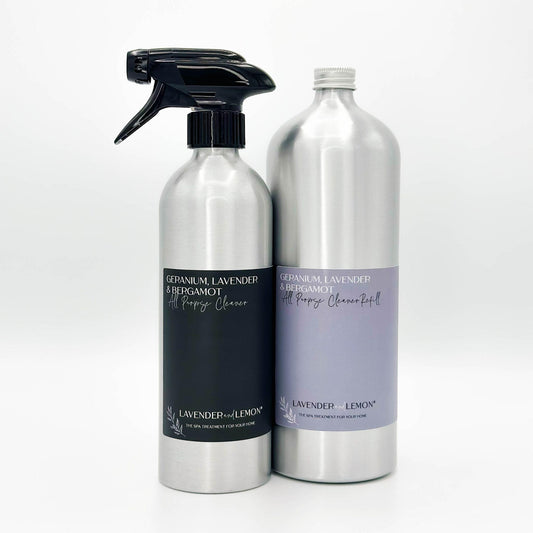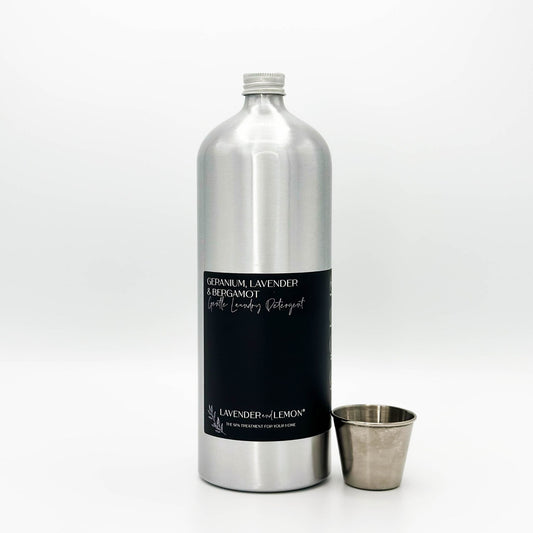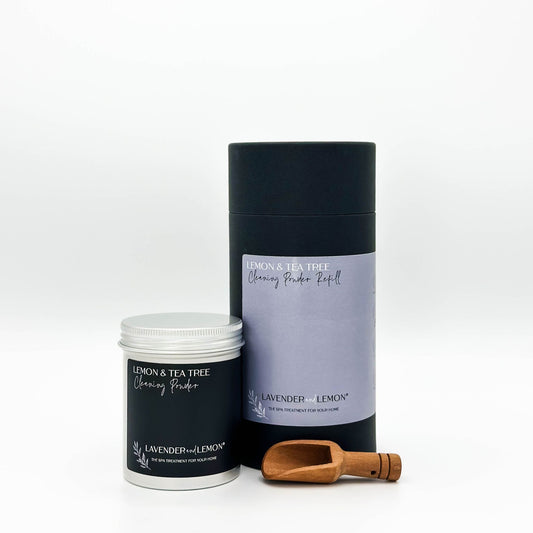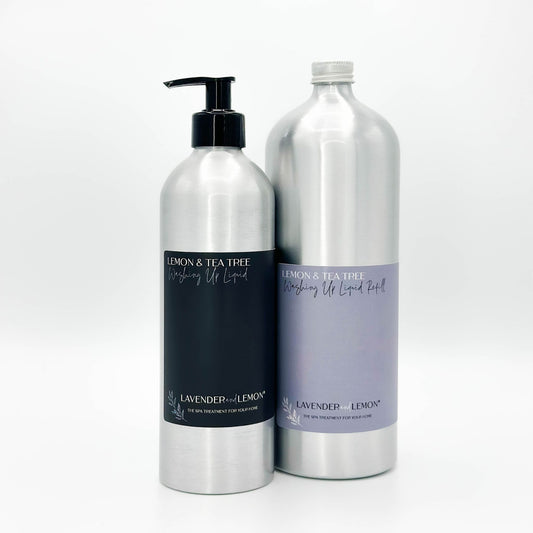Free Shipping Over £35
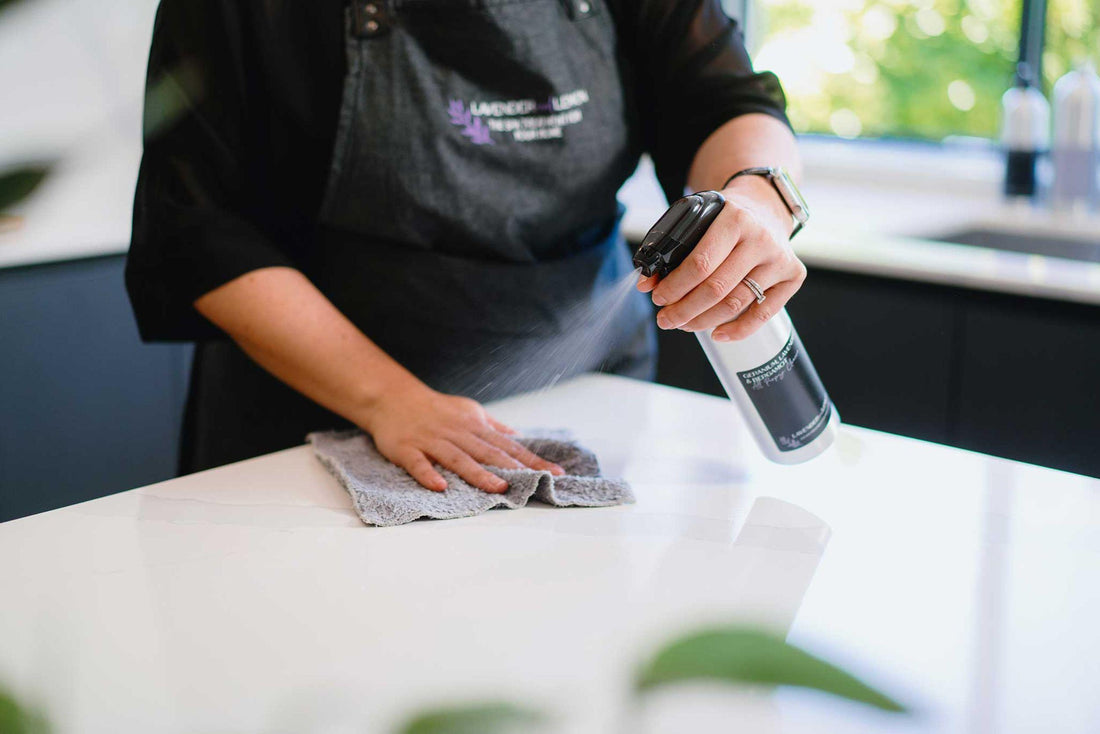
Cleaning Surfaces: Tips for a Sparkling, Hygienic Home
Share
Keeping your home clean is essential for a healthy and comfortable living environment, and one of the most important tasks is cleaning surfaces. Whether it's countertops, tables, floors, or bathroom fixtures, maintaining clean surfaces helps reduce the spread of germs, improve air quality, and keep your space looking pristine. In this guide, we’ll explore the best methods for cleaning surfaces, including tips for different types of surfaces and how to choose the right products for a thorough, safe clean.
Why Cleaning Surfaces is Important
Regular cleaning of surfaces is crucial for several reasons:
- Health and Hygiene: Surfaces like kitchen countertops, bathroom sinks, and dining tables can harbor germs, bacteria, and allergens. Regular cleaning helps eliminate these contaminants, keeping your home healthier.
- Aesthetic Appeal: Clean surfaces instantly make your home look tidier and more inviting. Dust, fingerprints, and spills can accumulate quickly, so cleaning surfaces regularly is key to maintaining a polished appearance.
- Prolongs Surface Lifespan: Dirt, grime, and other contaminants can damage surfaces over time. Regular maintenance ensures that your furniture, countertops, and floors stay in good condition for years to come.
Best Practices for Cleaning Different Surfaces
Different surfaces require specific cleaning techniques and products to ensure that they are cleaned effectively without causing damage. Here’s how to clean various surfaces in your home:
1. Cleaning Kitchen Surfaces
Kitchens are high-traffic areas where food preparation takes place, making it critical to keep countertops and other surfaces clean and free from bacteria. Here’s how to effectively clean kitchen surfaces:
- Countertops: Use a mild, multi-surface cleaner or a mixture of water and vinegar for cleaning kitchen countertops. Make sure to wipe down after every use, especially after preparing raw food, to avoid cross-contamination.
- Appliances: Wipe down the surfaces of appliances like the refrigerator, oven, and microwave with a microfiber cloth and a gentle cleaner to remove fingerprints, grease, and spills.
- Sink: Stainless steel or ceramic sinks can be cleaned with baking soda and a sponge to remove grime, followed by a rinse of vinegar to disinfect and make them shine.
2. Cleaning Bathroom Surfaces
Bathrooms are another area that requires frequent cleaning to maintain hygiene and prevent mold or mildew buildup. Here’s how to tackle bathroom surfaces:
- Tiles and Grout: Use a bathroom cleaner designed for tiles and grout, or make a paste with baking soda and water to scrub away soap scum. Rinse thoroughly to prevent buildup.
- Shower and Bathtub: Disinfect shower walls and bathtubs with a non-abrasive cleaner or a solution of vinegar and water. Make sure to wipe down these surfaces after every shower to prevent mold and mildew.
- Toilet: Clean the toilet bowl with a toilet-specific cleaner and scrub with a brush. Wipe down the seat, lid, and exterior with an antibacterial surface cleaner.
3. Cleaning Living Room Surfaces
Living room surfaces, such as coffee tables, TV stands, and shelves, can collect dust and fingerprints. Here’s how to keep these surfaces spotless:
- Wooden Furniture: Use a wood cleaner or a mixture of water and mild soap to clean wooden furniture. Avoid harsh chemicals that can strip the wood’s finish. Be sure to follow up with a wood polish to maintain its shine.
- Glass Surfaces: For glass tables and shelves, use a glass cleaner or a vinegar-water solution to remove smudges and fingerprints. Wipe with a lint-free cloth for a streak-free finish.
- Electronics: Clean TV screens and remotes with a microfiber cloth. Avoid using too much water or liquid near electronic devices.
4. Cleaning Floor Surfaces
The type of flooring in your home will determine the best approach for cleaning surfaces. Here’s a breakdown of common floor types:
- Hardwood Floors: Sweep or vacuum regularly to remove dust and debris. Use a damp mop and a wood-safe cleaner for deeper cleaning. Avoid excessive water, which can damage hardwood.
- Tile Floors: For tile floors, use a multi-surface cleaner or a specific tile cleaner to remove grime. Pay attention to the grout lines, which may require scrubbing with a brush.
- Carpeted Floors: Vacuum carpets frequently to remove dust, dirt, and allergens. For deep cleaning, consider using a carpet cleaner or hiring a professional carpet cleaning service.
[product=eco-friendly-all-purpose-cleaner]
✓ From Grease to Glass: Zero Residue, 100% Shine
✓ One Cleaner, Infinite Uses: Simplify Your Home
✓ Elevate Your Senses: Aromatherapy while you clean
[/product]
Tips for Choosing the Right Cleaning Products for Surfaces
Selecting the right products for cleaning surfaces is just as important as the cleaning process itself. Here’s how to choose the best cleaning products for your home:
1. Non-Toxic and Eco-Friendly Cleaners
Look for non-toxic, eco-friendly surface cleaners that are free from harsh chemicals. These products are safer for your family and the environment while still being effective at removing dirt and germs. Many eco-friendly cleaners use plant-based ingredients and essential oils for a natural clean.
2. Multi-Surface Cleaners
Multi-surface cleaners are versatile and can be used on different types of surfaces, making them a convenient option for cleaning countertops, tables, and other high-use areas. Just be sure to check the label to ensure the cleaner is suitable for the surface you are cleaning.
3. Disinfecting Wipes and Sprays
For quick cleanups or disinfecting high-touch areas like door handles, light switches, and remote controls, disinfecting wipes and sprays are handy. Look for disinfectants that kill 99.9% of germs and are safe for surfaces like plastic, metal, and wood.
4. DIY Natural Cleaners
You can also make your own DIY natural cleaners using household items like vinegar, baking soda, and lemon juice. These ingredients are effective for cleaning surfaces and can be mixed to create powerful, non-toxic cleaners that are gentle on surfaces and the environment.
How Often Should You Clean Surfaces?
The frequency of cleaning surfaces will depend on the area and how often it's used. Here’s a general guide:
- High-Traffic Areas (e.g., kitchen counters, bathroom sinks): Clean daily or after every use.
- Medium-Traffic Areas (e.g., living room tables, appliances): Clean once a week.
- Low-Traffic Areas (e.g., shelves, bedroom dressers): Clean every two weeks to once a month.
Keep Your Home Spotless with Regular Surface Cleaning
Cleaning surfaces is essential for maintaining a clean, healthy, and inviting home. By using the right techniques and products for each type of surface, you can effectively remove dirt, germs, and grime, keeping your home in top shape. Whether you’re scrubbing kitchen countertops, disinfecting bathroom tiles, or polishing wooden furniture, regular cleaning of surfaces will help your home stay sparkling and fresh.
RELATED ARTICLES
Surface Clean Practices: 10 Essential Tips for Keeping Your Surfaces Sparkling Clean
The Power of All Purpose Cleaner: A Versatile Solution for Every Surface
Achieve Streak-Free Shine with the Best Windows Cleaning Spray
The Power of Surface Spray: How to Keep Your Home Clean
A Guide to Surface Cleaning Spray: Keep Your Home Sparkling Clean
The Benefits of Cleaning Spray with Essential Oils
Best All-Purpose Cleaner UK: A Guide to the Top Multi-Surface Cleaners for Your Home

